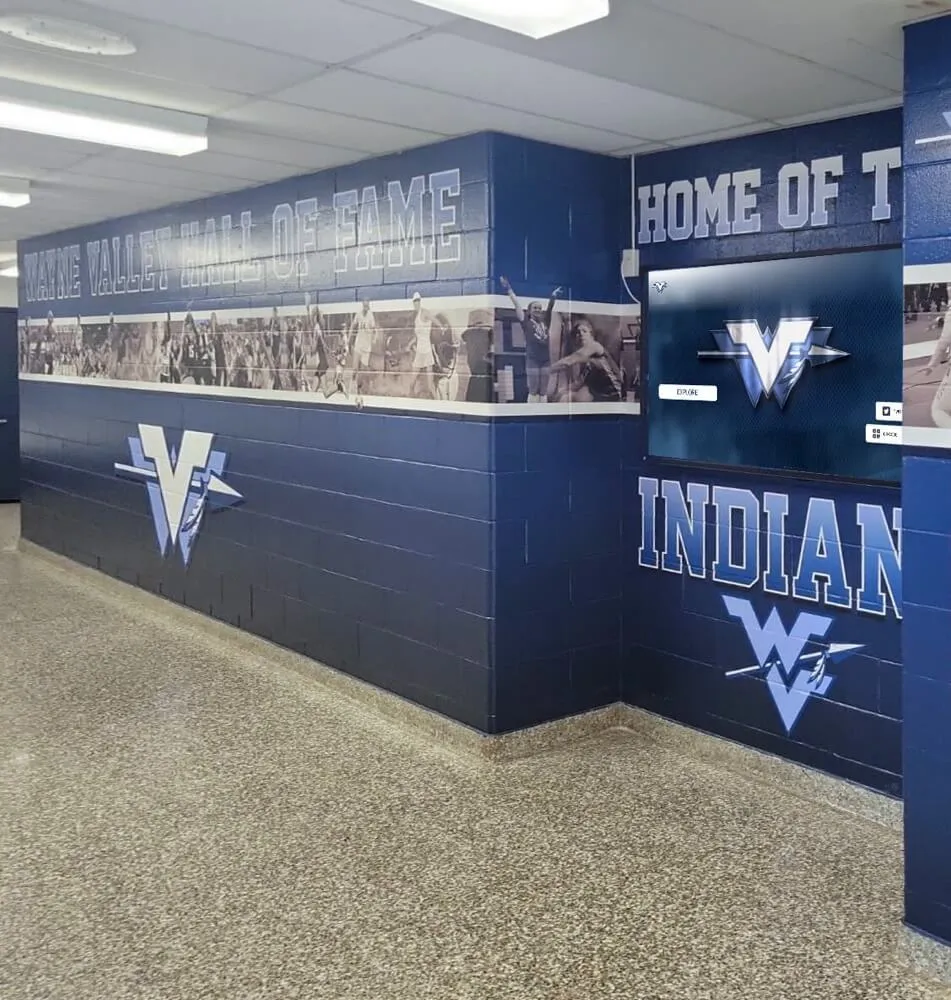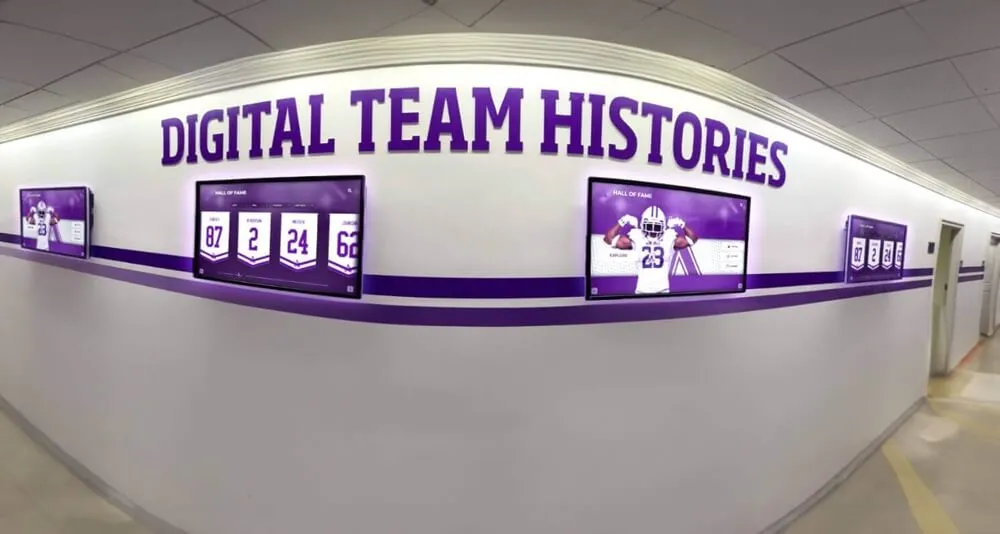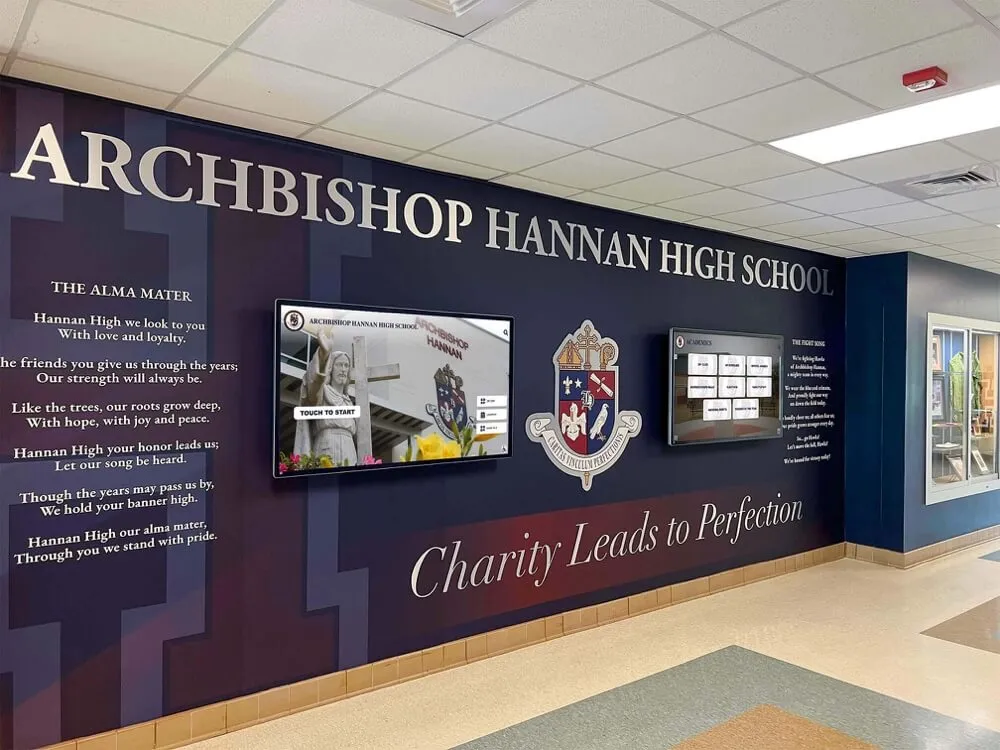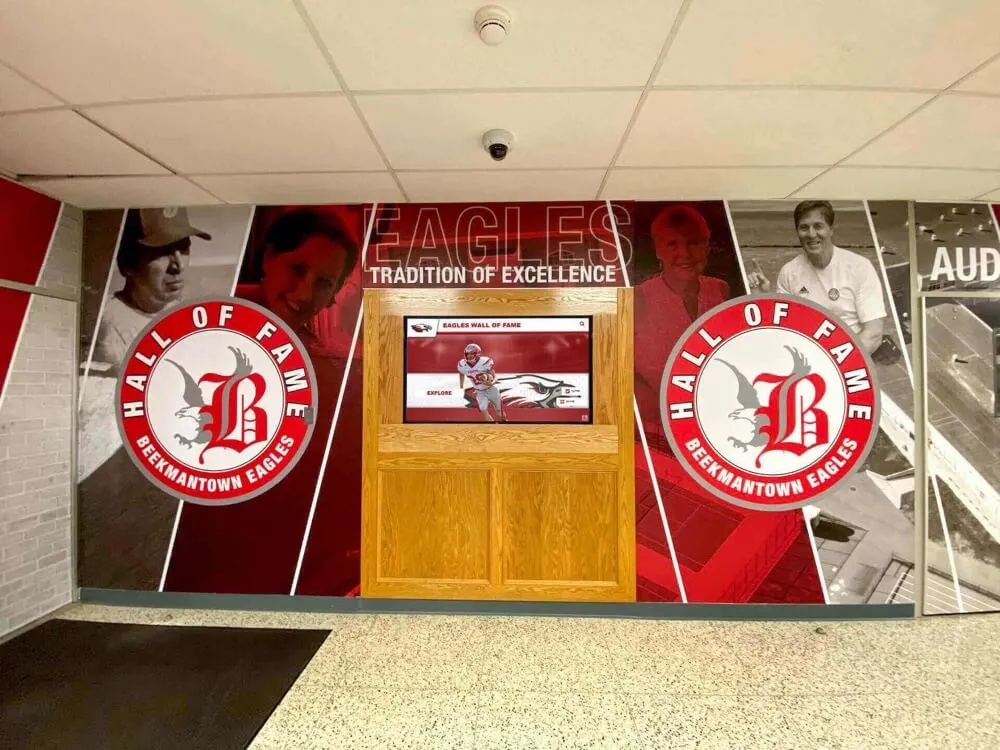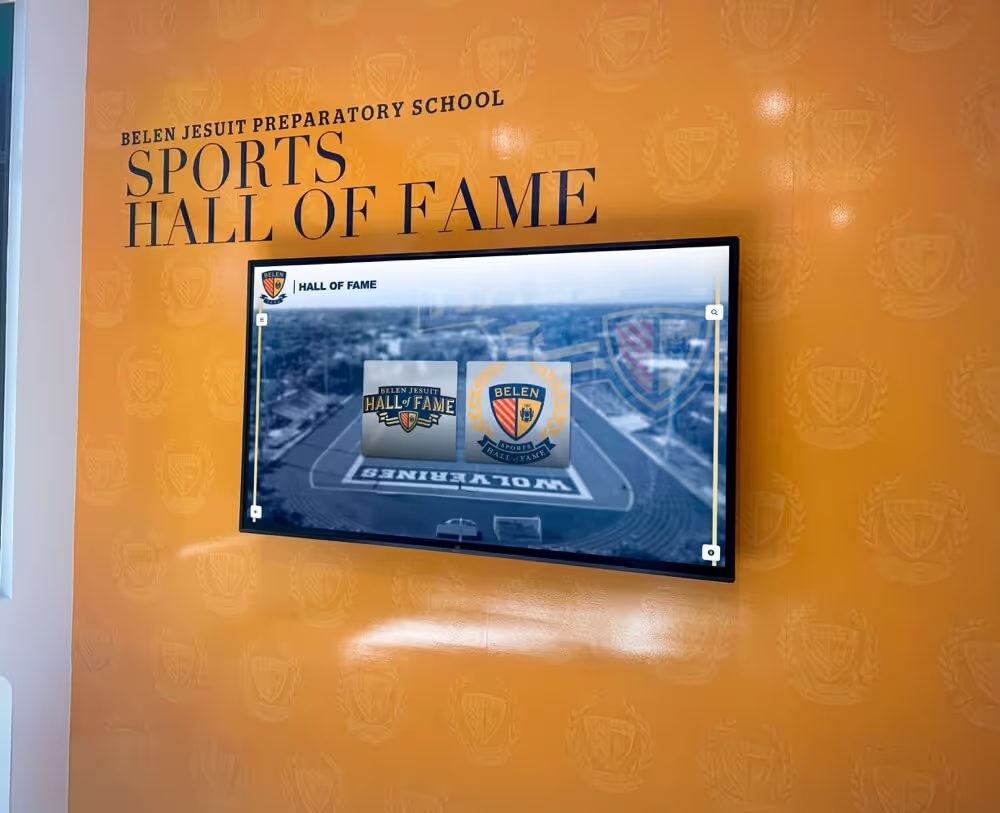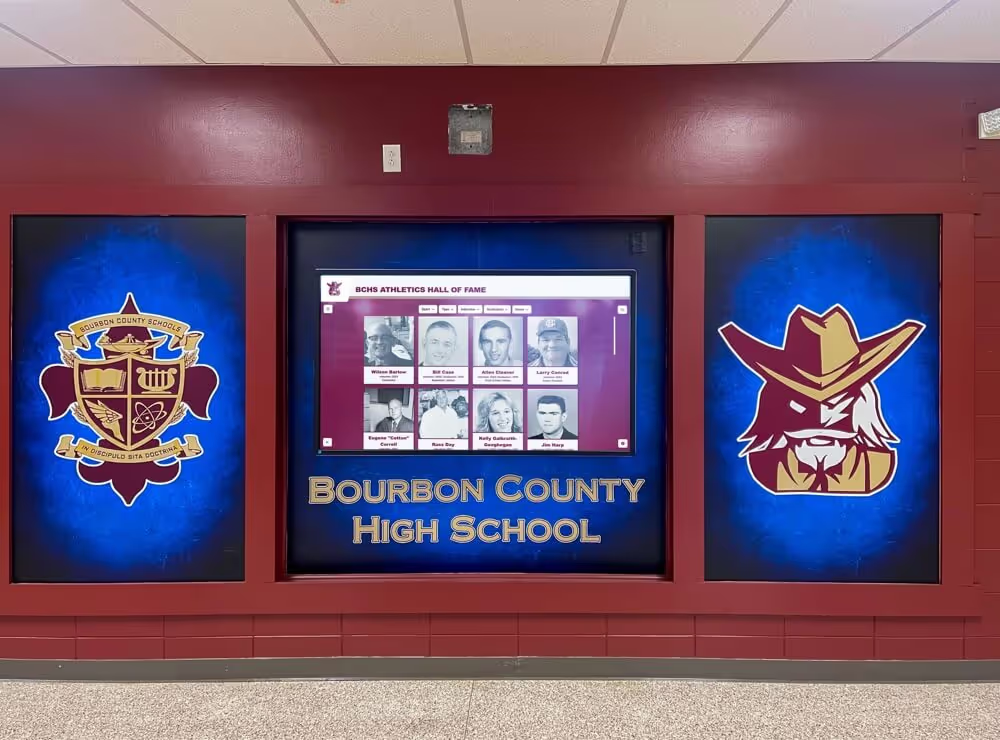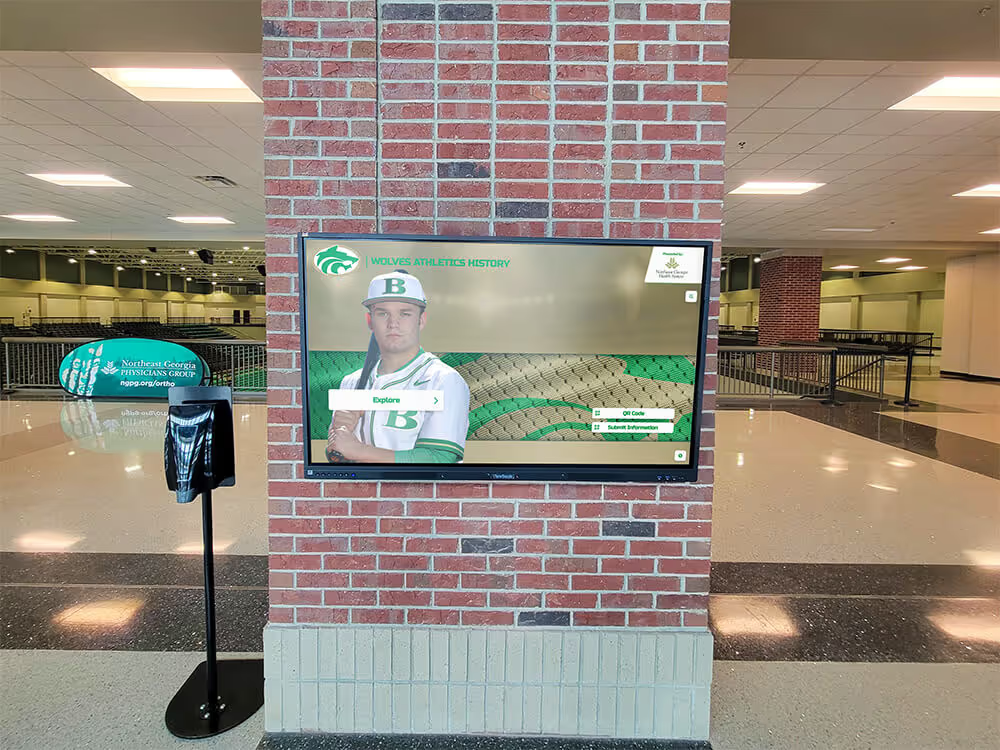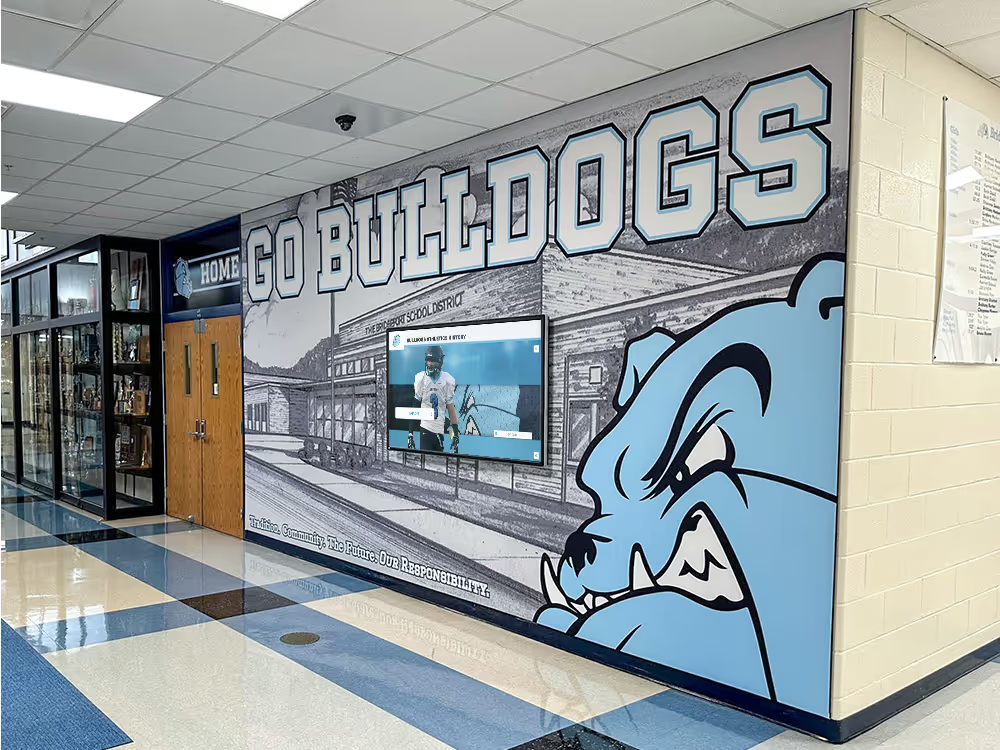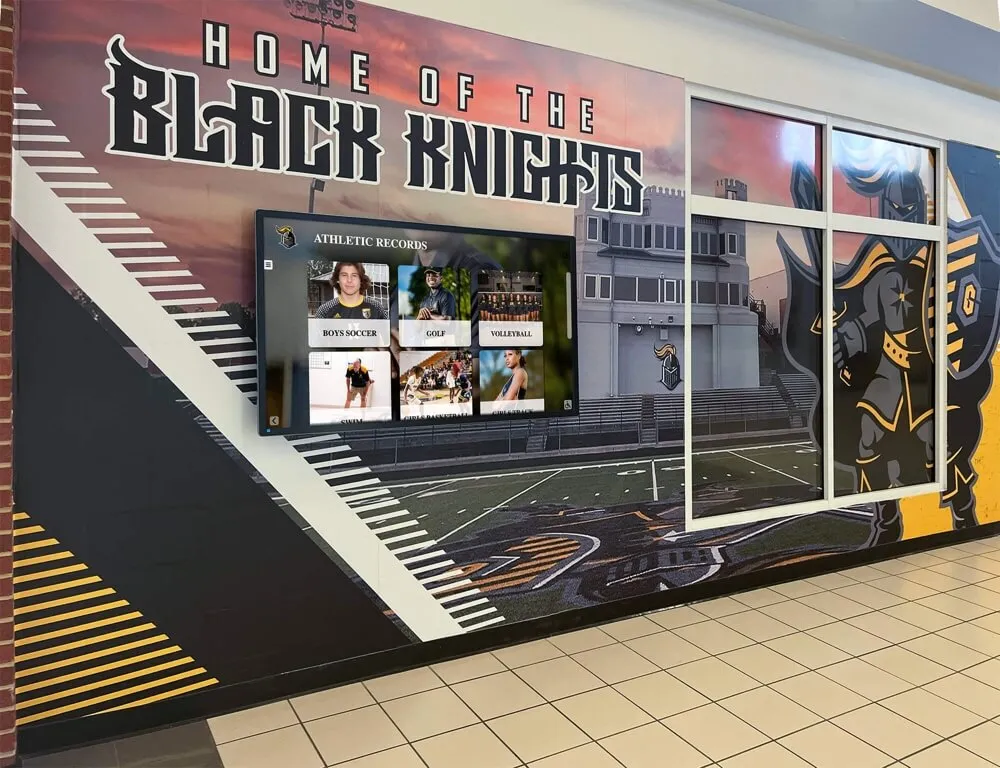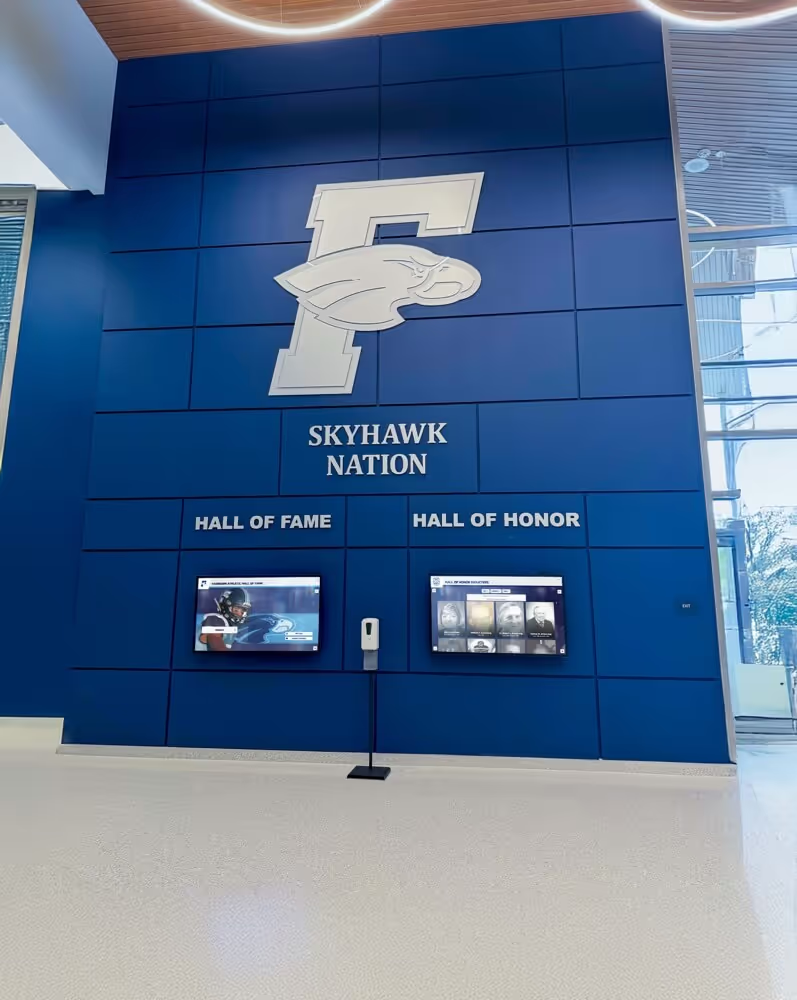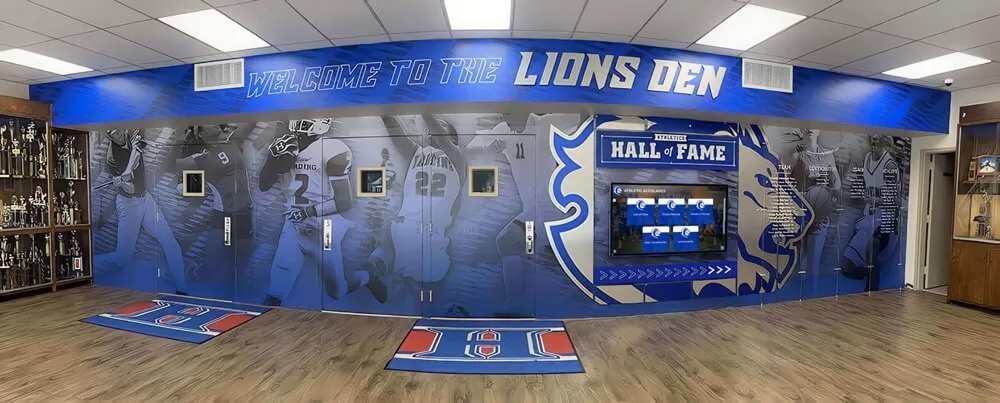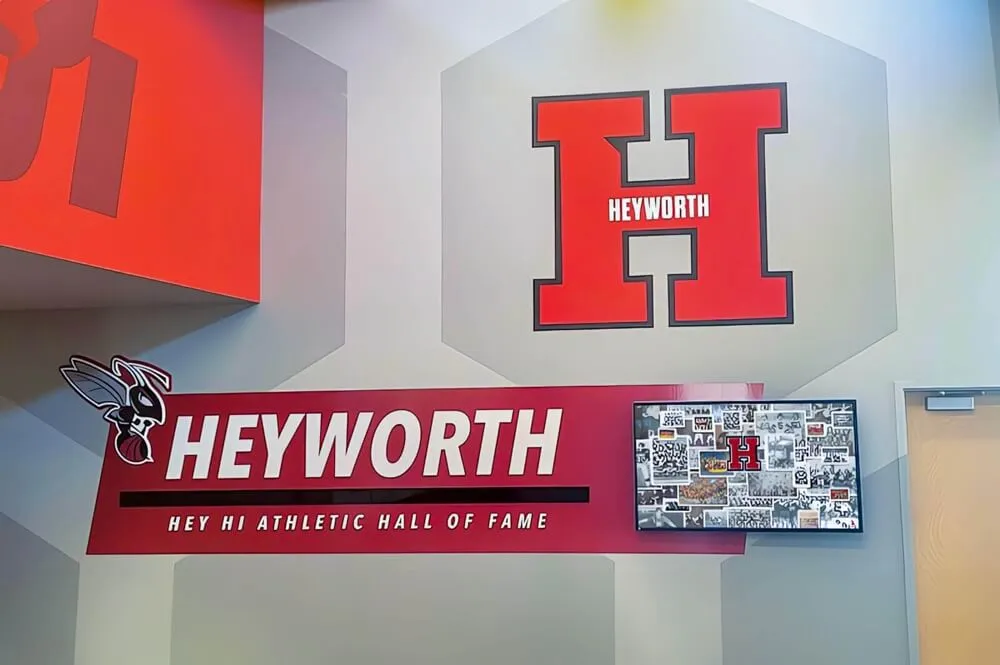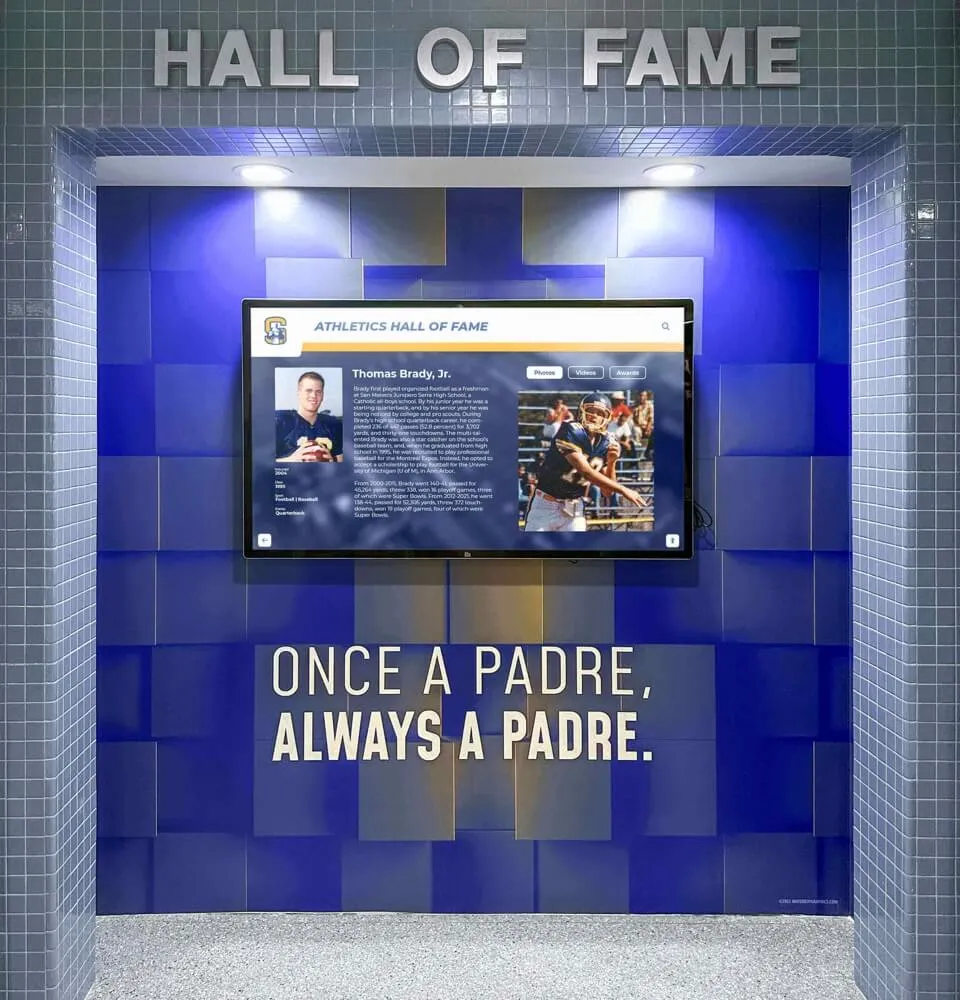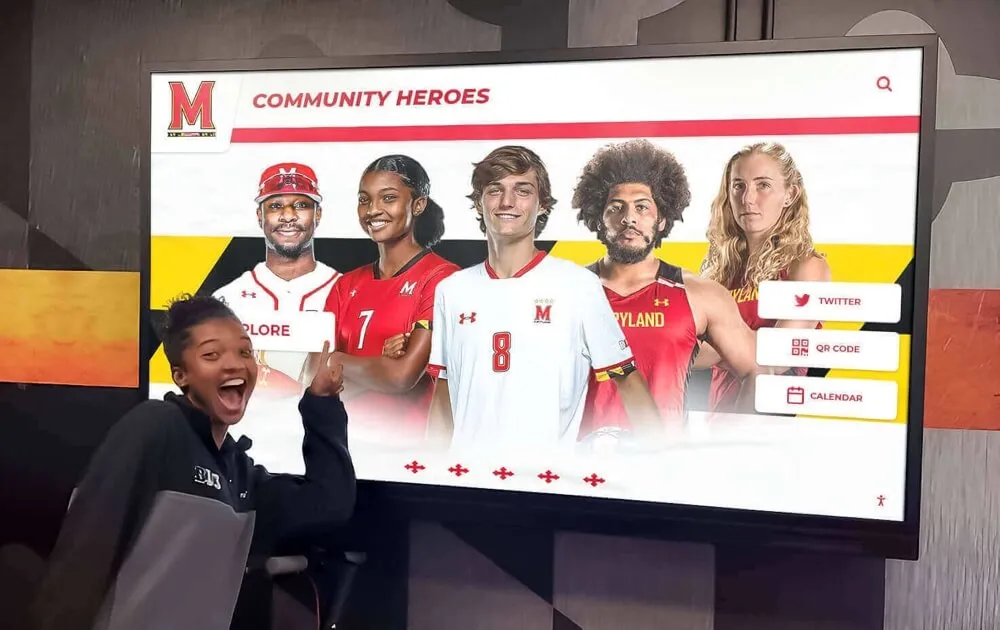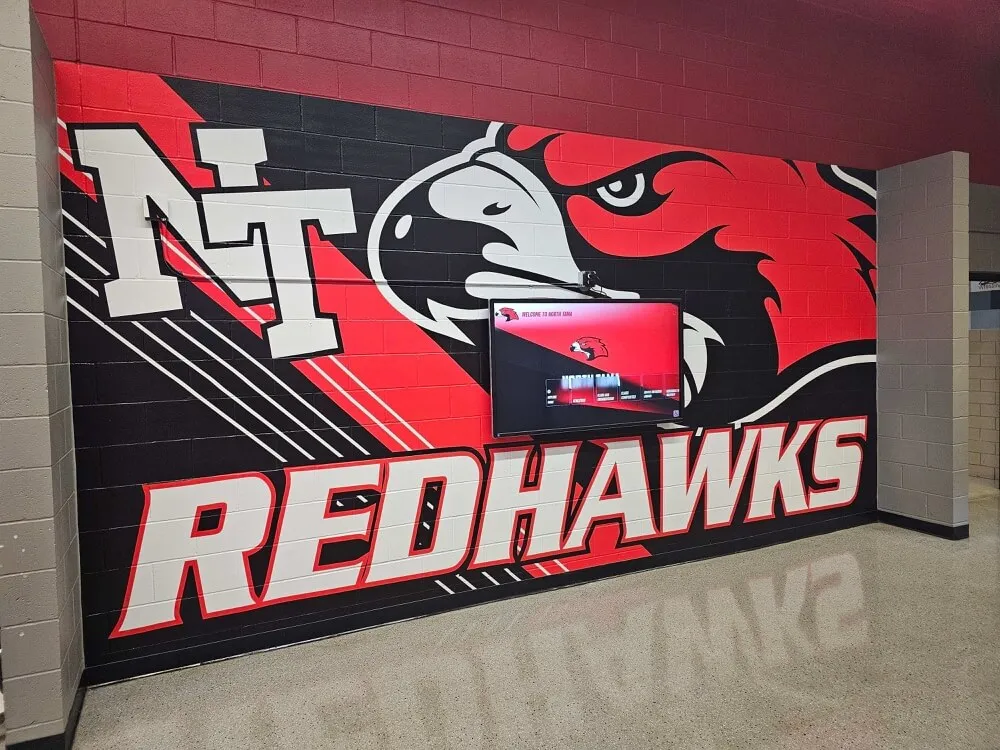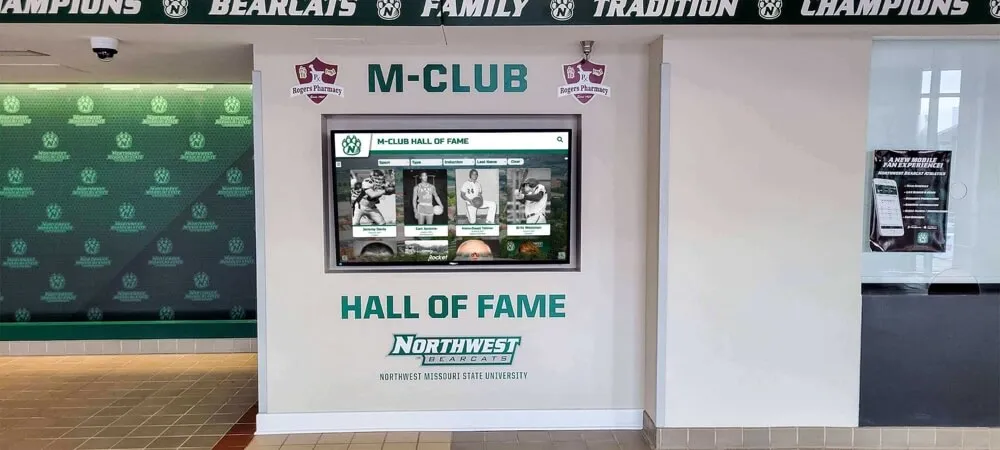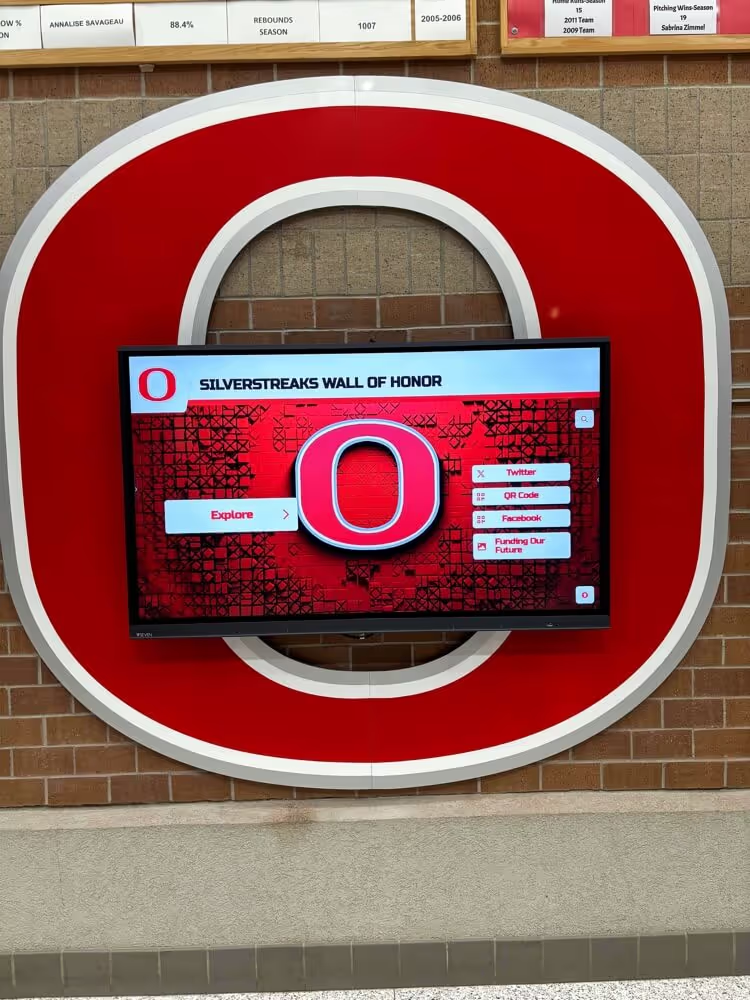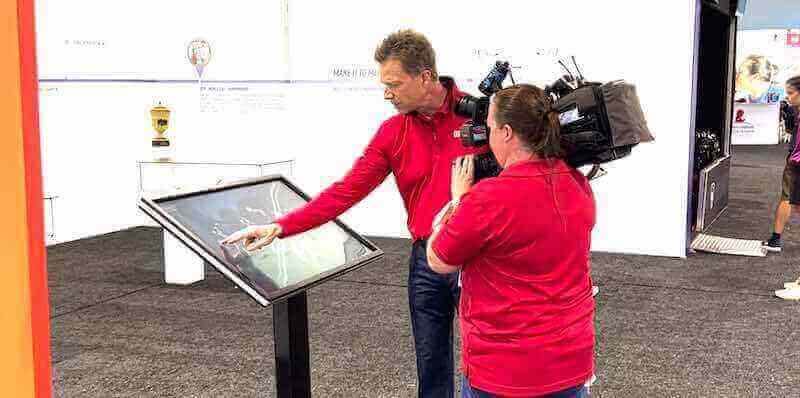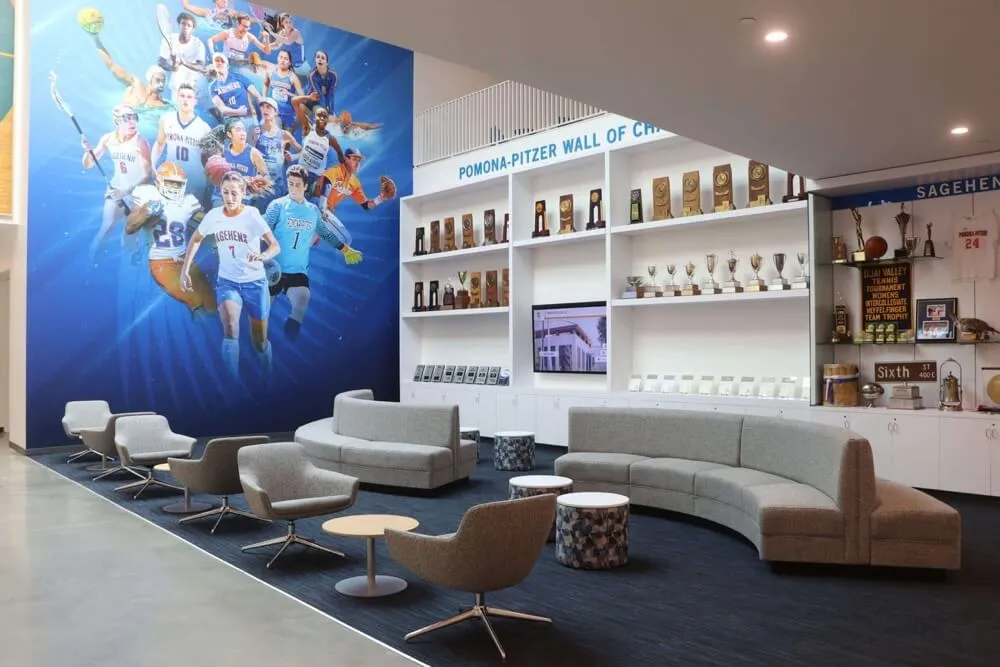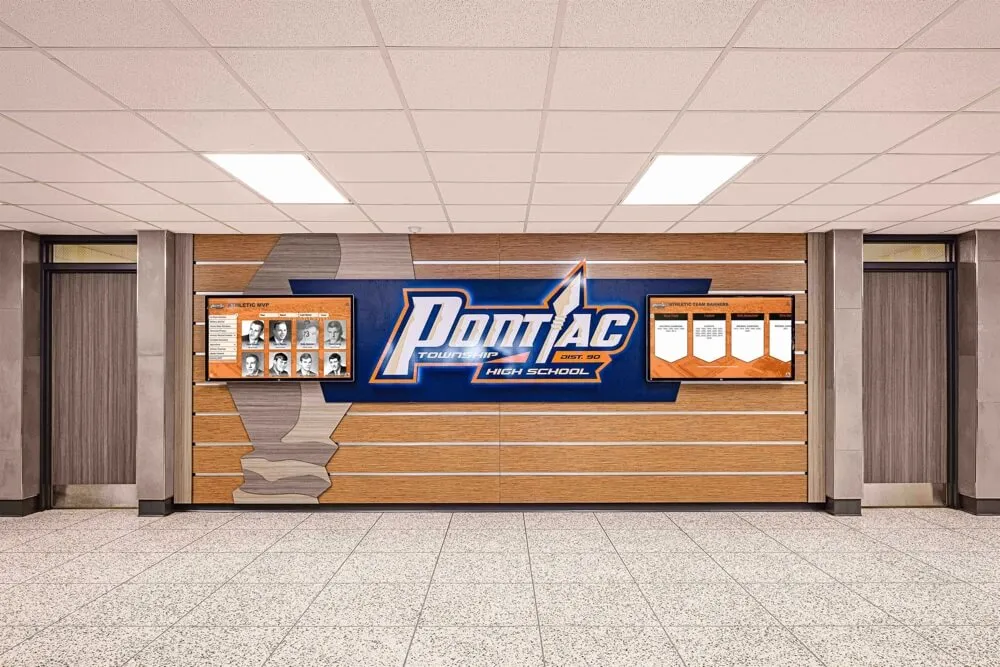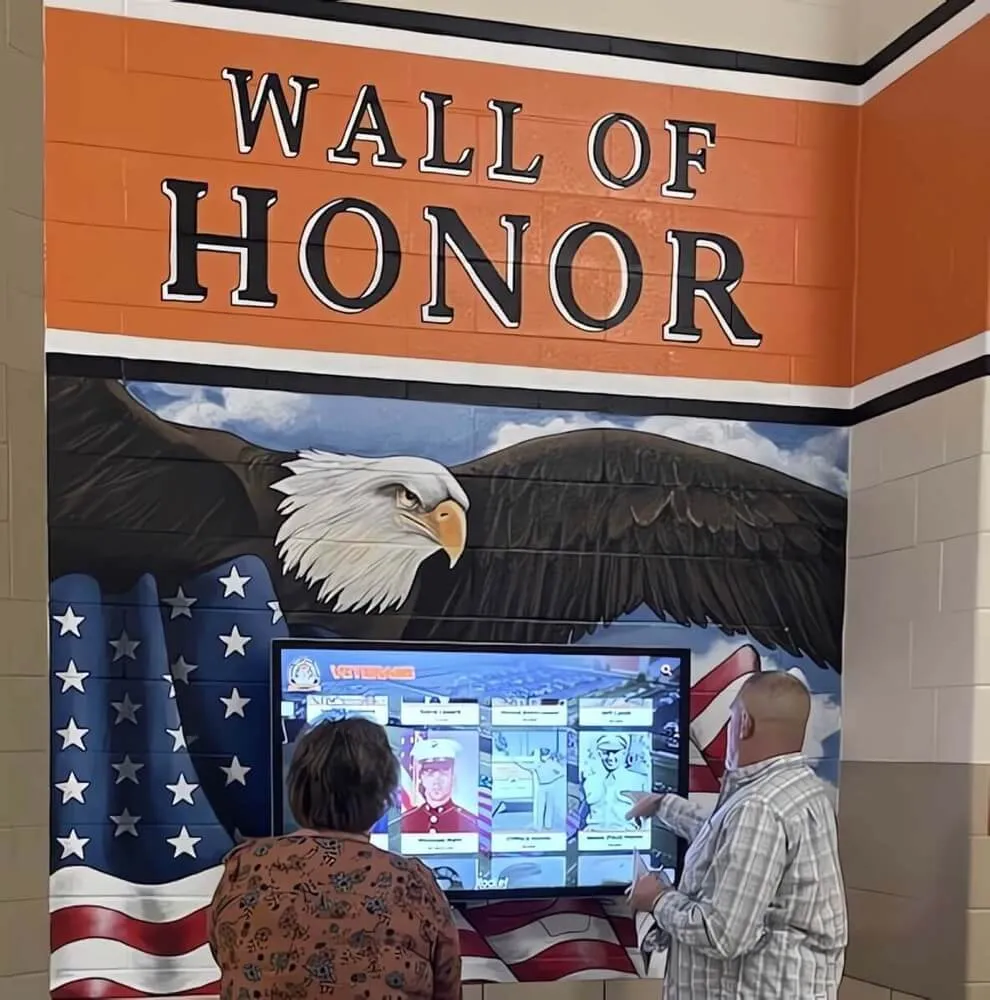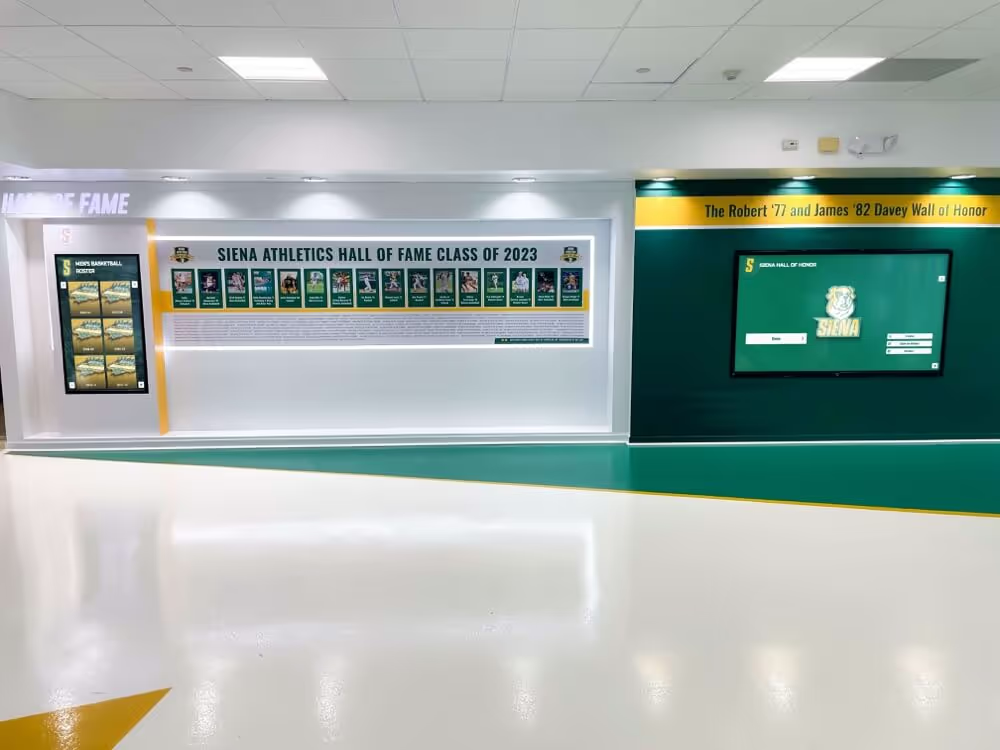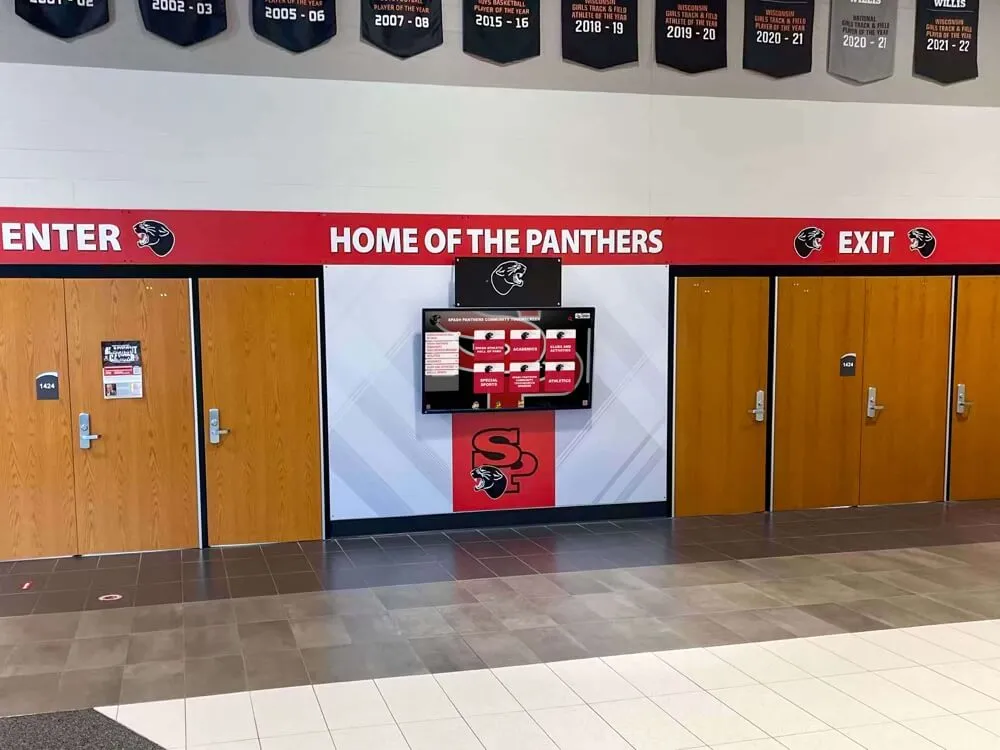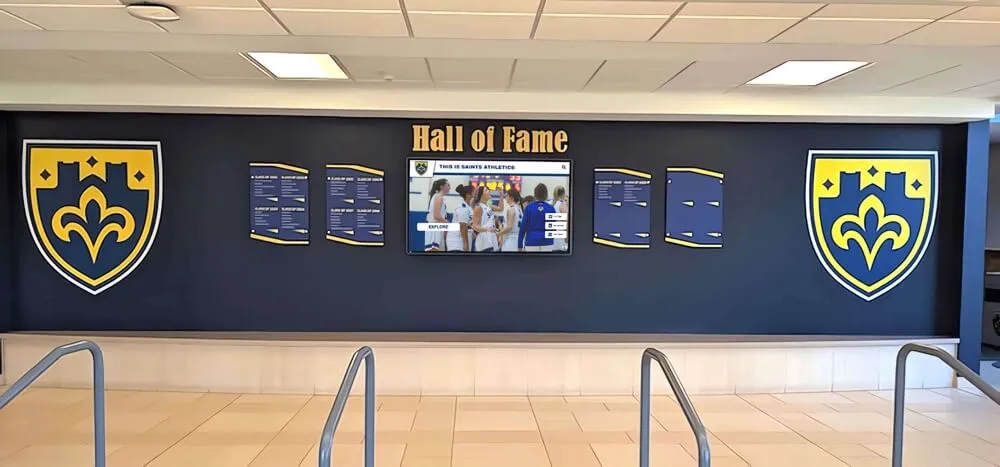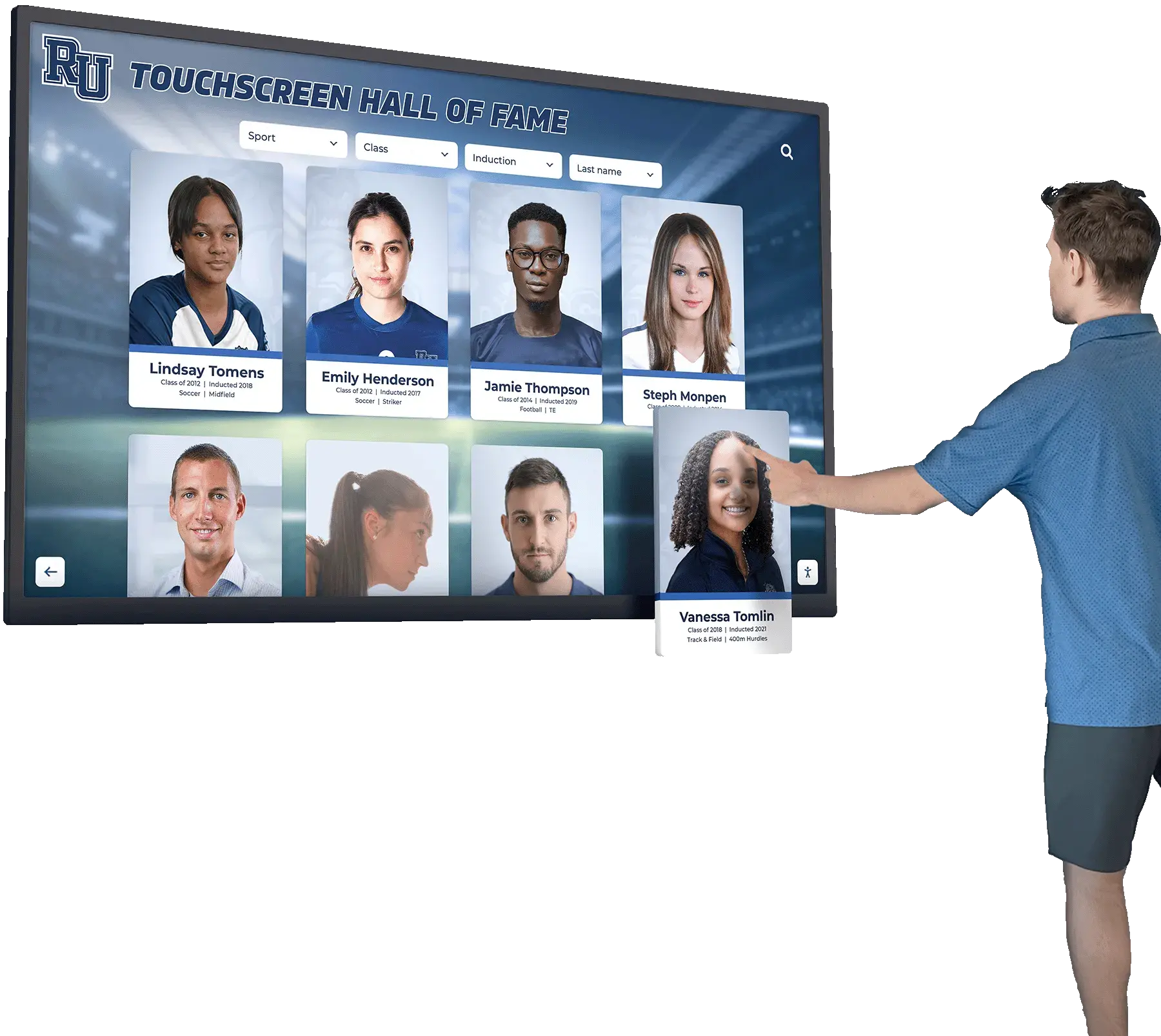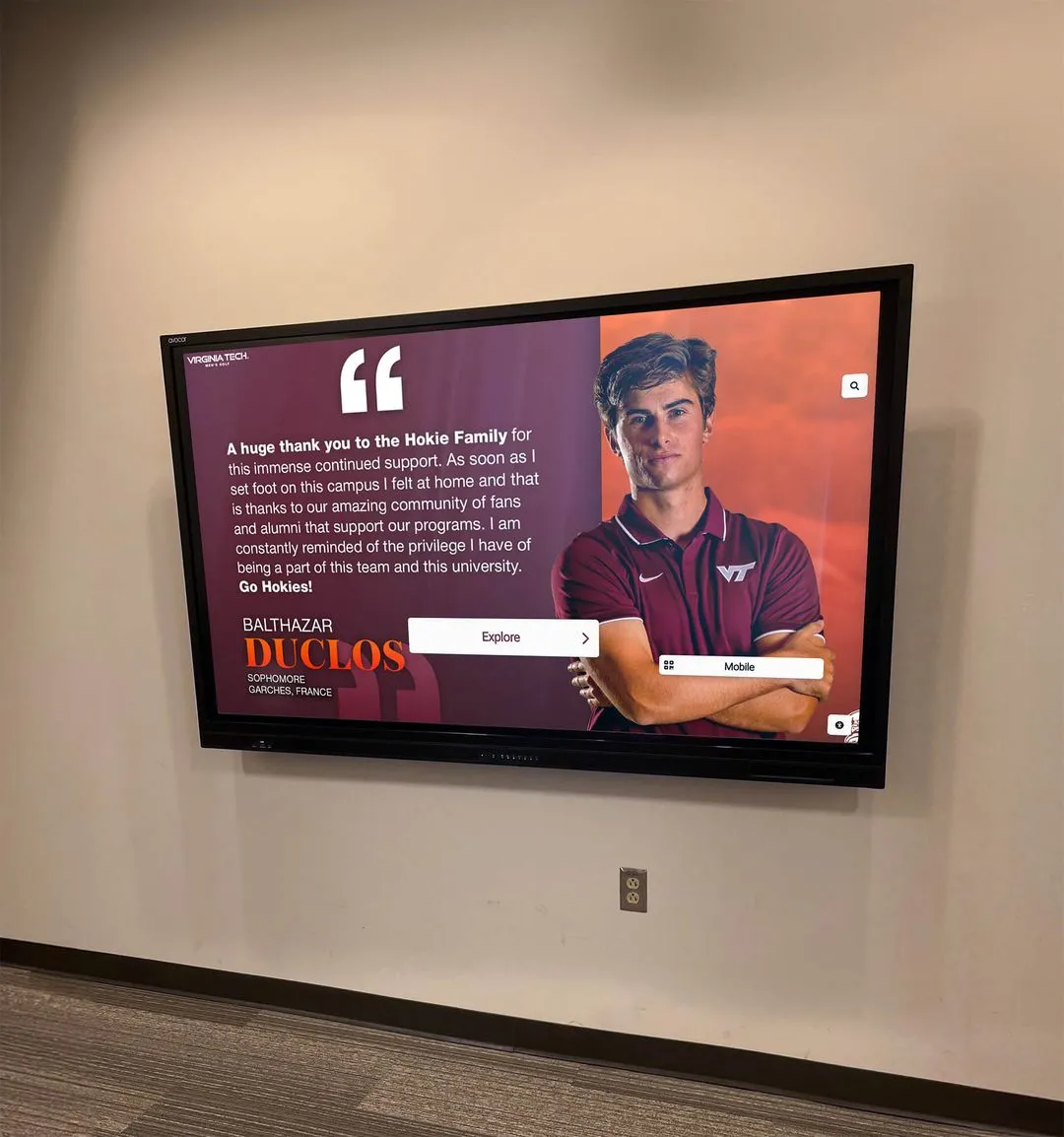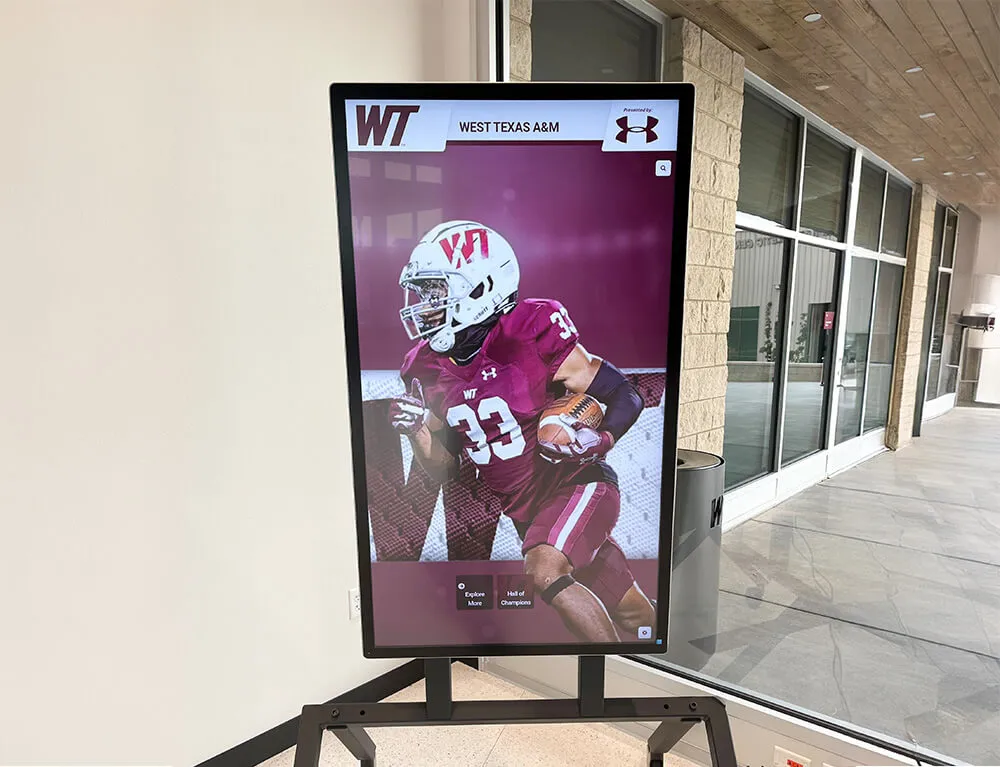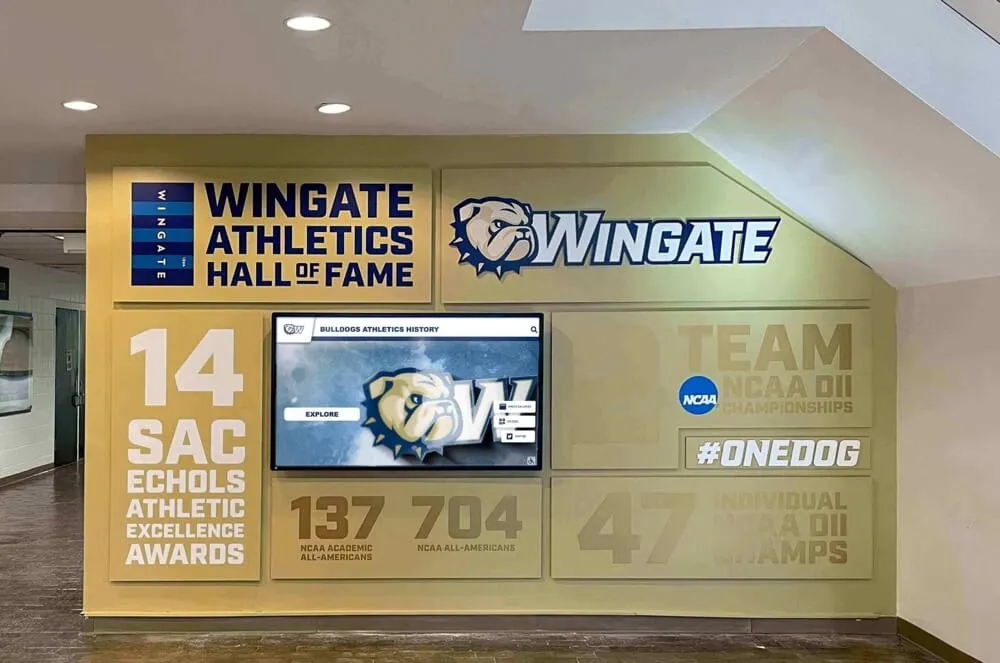The Inclusivity Imperative for Digital Walls of Fame
In today's increasingly diverse educational communities, recognition systems must serve everyone. Touchscreen halls of fame provide unprecedented opportunities to make institutional recognition genuinely inclusive through cutting-edge accessibility features that traditional displays simply cannot match.
Every school community includes people with diverse abilities and needs. Modern digital walls of fame offer revolutionary possibilities not just to digitize recognition programs, but to make them truly accessible to everyone. At Rocket Alumni Solutions, we’ve developed specialized touchscreen hall of fame technology that transforms accessibility from an afterthought into a core design principle.
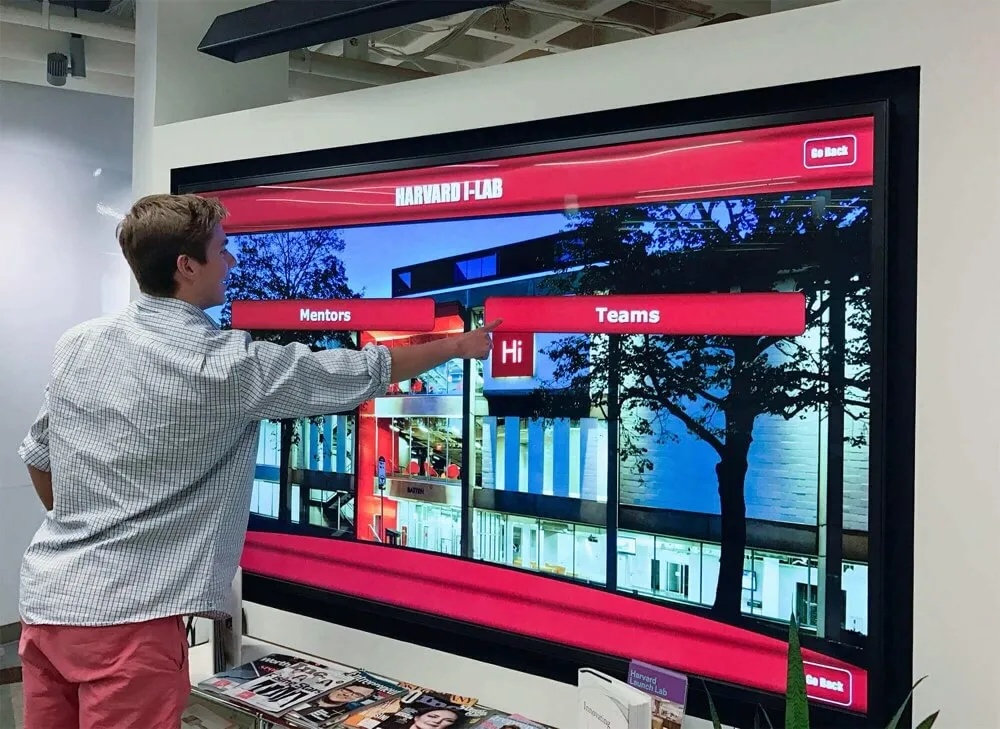
Harvard University's interactive alumni display incorporates multiple accessibility features including adjustable height and voice control
Transforming Recognition Through ADA Compliant Digital Displays
While basic ADA compliance represents the minimum legal standard, truly inclusive recognition displays must go beyond compliance to create equitable experiences. Interactive touchscreen kiosks can transform recognition from a passive visual experience into a multi-sensory engagement opportunity accessible to everyone.
Physical Accessibility Engineering
ADA compliant digital displays address physical accessibility through innovative design approaches:
- Multi-Height Interaction Zones: Interactive elements positioned at various heights serve users of all statures and mobility levels
- Precision Reach Range Calibration: Touch targets strategically placed within the ADA-recommended 15-48" range
- Wheelchair-Optimized Approach Design: Installation planning that ensures proper clearance (30" × 48" minimum) and approach paths
- Alternative Interaction Methods: Integration of non-touch input options including voice control, keyboard connectivity, and gesture recognition
Clearance Requirements
- 30" × 48" minimum clear floor space
- 36" wide accessible route to display
- No protruding objects in approach path
- Maximum 25" forward reach depth
Interaction Height Guidelines
- Interactive elements: 15-48" from floor
- Primary content zone: 24-40" from floor
- Adjustable solutions preferred when possible
- 5lbs maximum activation force required
Visual Accessibility Technologies
For visitors with visual impairments, digital donor recognition walls offer significant advantages over traditional methods:
- Adaptive Contrast Enhancement: One-touch switching between multiple contrast modes optimized for different visual needs
- Dynamic Text Scaling: Content that elegantly resizes without reformatting or information loss
- Screen Reader Optimization: Properly structured content with semantic HTML and ARIA attributes
- Audio Description Integration: Optional narration of visual content and spatial orientation
- Vision-Specific Font Options: Typography selections optimized for various reading and visual processing conditions
These digital accommodations enable alumni with visual impairments to independently explore recognition content that would be completely inaccessible in traditional trophy cases or static displays.
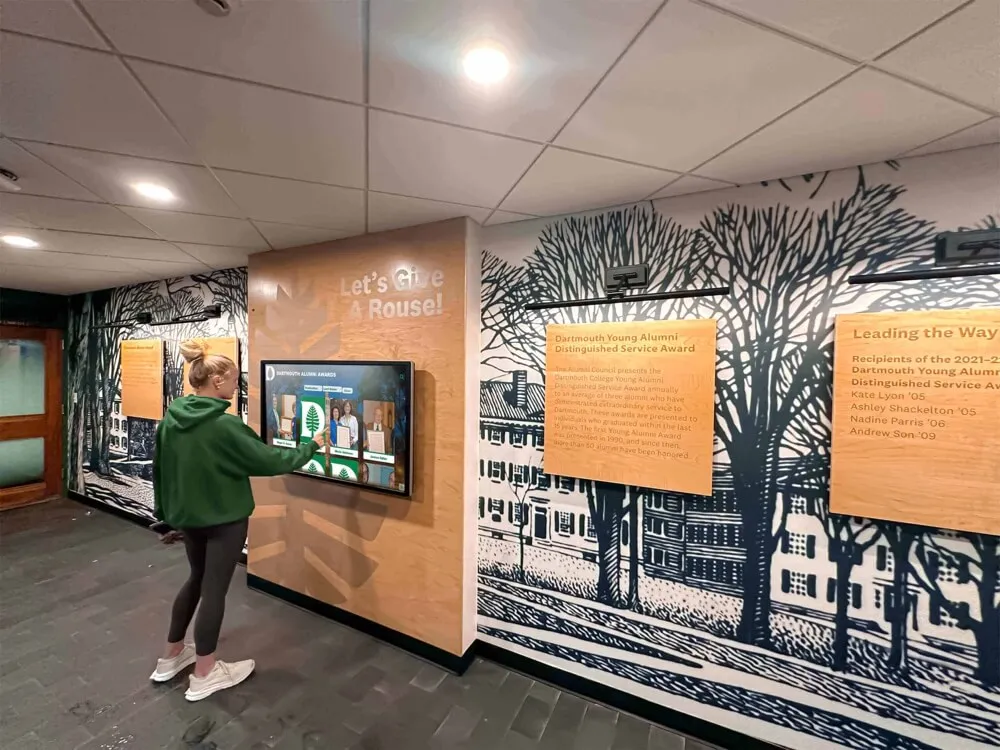
Dartmouth College's digital donor recognition wall features high-contrast display modes and screen reader compatibility
Real-World Implementation Success: Millard West High School
Millard West High School implemented a comprehensive accessibility-first approach to their athletic hall of fame software with remarkable results:
"Our traditional halls of fame displays were essentially invisible to students and alumni with visual impairments and difficult to access for wheelchair users. After implementing our ADA compliant digital halls of fame with comprehensive accessibility features, we've seen a 215% increase in overall engagement. Most significantly, we now have active participation from alumni with disabilities who previously couldn't access our recognition displays at all."
— Director of Alumni Relations, Millard West High School
Their implementation includes:
- Voice-controlled navigation with natural language processing
- Multiple contrast modes with accessibility certification
- Fully WCAG 2.1 AA compliant digital interface
- Physically accessible installation with appropriate clearances
- Multilingual support covering community languages
This accessibility-focused approach created measurable benefits through increased community participation and enhanced institutional reputation as an inclusive environment.
Breaking Language Barriers with Multilingual Digital Recognition
Web-accessible recognition displays can eliminate language barriers that traditional displays cannot address:
- Dynamic Translation Engine: On-demand content translation across multiple languages
- Cultural Context Preservation: Intelligent translation that maintains cultural nuances
- Full Character Support: Proper rendering of names and information in non-Latin scripts
- Dual-Language Presentation: Side-by-side bilingual text options for multilingual communities
- Language Preference Memory: System remembers user language preferences
These capabilities ensure that language differences don’t prevent community members from engaging with your institution’s history and achievements.
Did You Know?
Schools with multilingual digital recognition displays report an average 27% increase in engagement from families where English is not the primary language spoken at home.
Cognitive Accessibility Innovations in Digital Recognition
For neurodivergent users and those with cognitive disabilities, cloud-based trophy displays offer specialized features:
- Intuitive Navigation Patterns: Consistent, predictable interface design
- Content Complexity Controls: Information presented at adjustable complexity levels
- Extended Interaction Timers: Customizable timeout settings to prevent rushing
- Distraction Reduction Options: Settings to minimize animations and visual complexity
- Step-by-Step Guided Exploration: Optional guided browsing modes with clear instructions
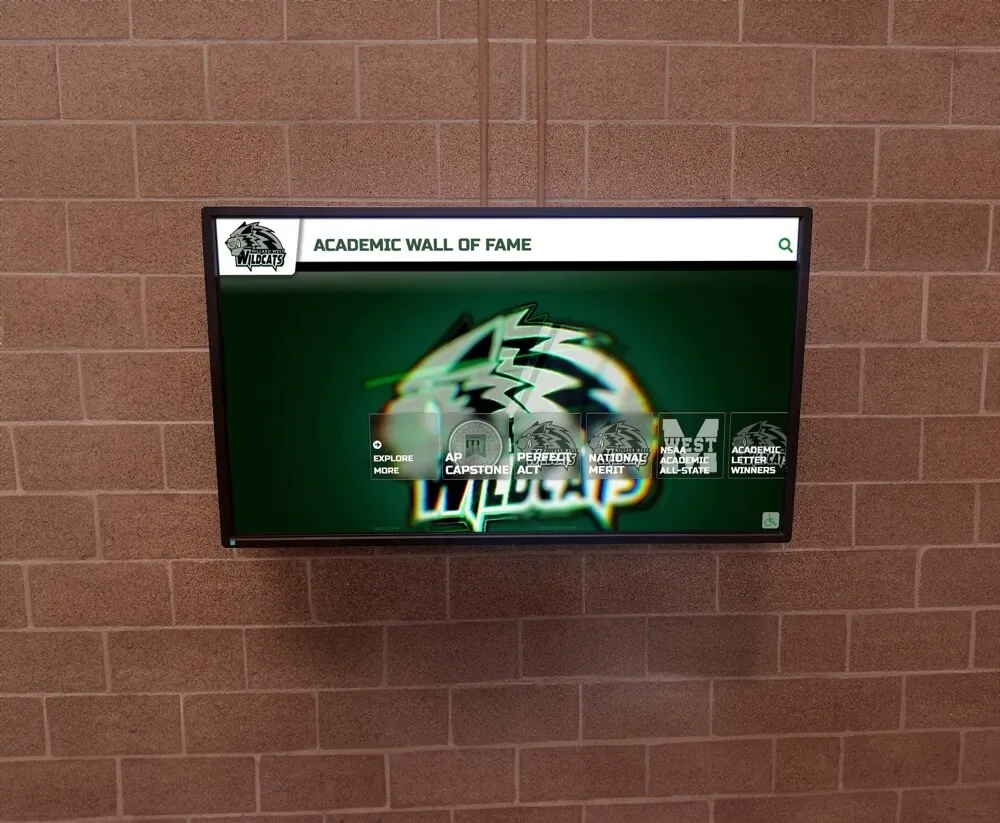
A student navigates the simplified interface mode on Millard High School's interactive alumni display
Comprehensive Implementation Framework for Accessible Recognition
Creating an ADA compliant digital halls of fame involves these essential phases:
- Accessibility Assessment: Evaluate existing recognition systems against accessibility standards
- Inclusive Planning: Gather input from stakeholders with diverse abilities and needs
- Feature Prioritization: Identify must-have vs. nice-to-have accessibility technologies
- Installation Design: Create physical installation plans that meet or exceed ADA standards
- Usability Testing: Validate designs with diverse user groups representing different abilities
- Accessibility Maintenance: Establish protocols for maintaining accessibility as content evolves
For detailed technical specifications, consult our digital halls of fame implementation guide which includes comprehensive accessibility requirements and installation best practices.
Emerging Technologies Enhancing Recognition Accessibility
Several cutting-edge technologies are revolutionizing accessible digital recognition:
Proximity Detection
Smart sensors detect user approach and automatically adjust interface height and orientation
Natural Voice Recognition
Advanced NLP enables conversational navigation without physical interaction
Personal Device Integration
RFID/Bluetooth connectivity allows personalized accessibility settings via mobile devices
Neural Text-to-Speech
Human-like voice synthesis creates natural audio descriptions of visual content
Computer Vision
AI-powered image analysis automatically generates descriptive alt text
Gesture Recognition
Camera-based systems allow touchless interaction through hand gestures
Accessibility as an Institutional Value Statement
An ADA compliant digital halls of fame communicates powerful institutional values:
- Demonstrated Commitment: Shows dedication to inclusion beyond minimum requirements
- Alumni Relationship Enhancement: Ensures all alumni can connect with their legacy regardless of ability
- Community-Building: Creates shared experiences that transcend ability differences
- Future-Proofed Recognition: Adapts to evolving accessibility needs and standards
- Legal Compliance: Mitigates risk of ADA-related complaints and litigation
This commitment to accessibility directly strengthens alumni engagement by removing barriers to participation in institutional recognition.
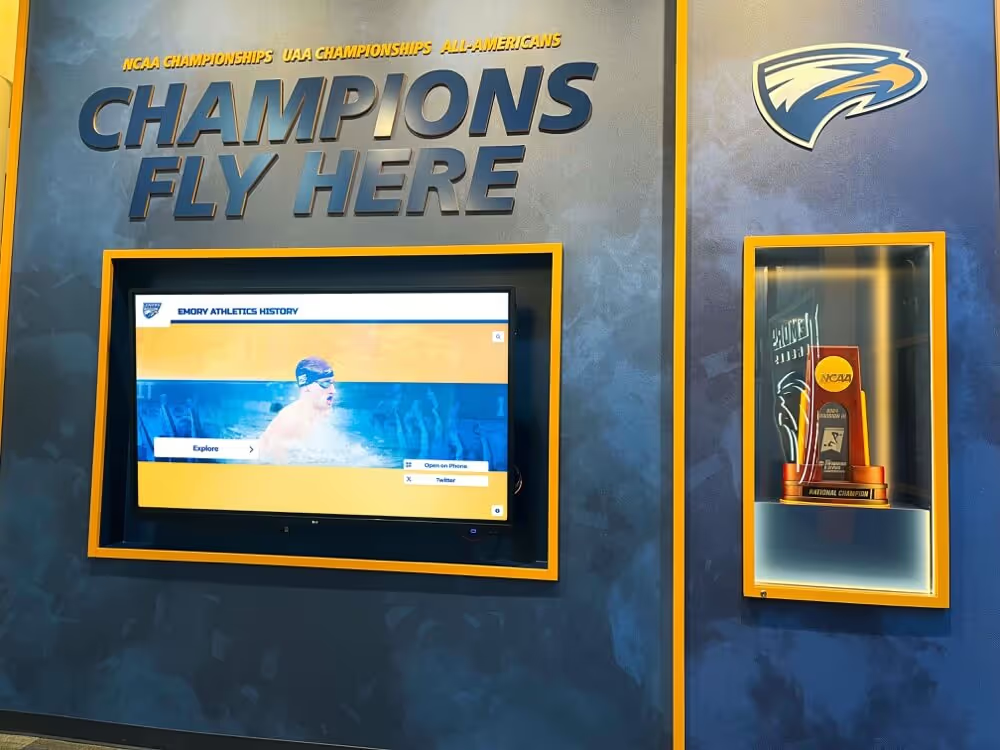
A wheelchair user independently interacts with Emory University's accessible digital donor recognition wall
Measuring Accessibility Impact
Institutions can quantify the success of accessible recognition through these metrics:
- Satisfaction surveys segmented by ability group
- Engagement analytics comparing interaction methods
- Feedback from disability advocacy organizations
- Usage patterns of specific accessibility features
- Community sentiment analysis across ability groups
- Social media mentions related to accessibility
Key Performance Indicators for Accessibility
- Percentage of total users utilizing accessibility features
- Engagement time comparison between standard and accessible interfaces
- Number of successful voice navigation sessions completed
- User satisfaction ratings from visitors with disabilities
- Percentage of content successfully accessed through assistive technologies
How To Build an ADA Compliant Digital halls of fame
Creating a truly accessible touchscreen hall of fame requires thoughtful planning and implementation. Follow these comprehensive steps to ensure your recognition system serves everyone in your community:
1. Perform Comprehensive Accessibility Assessment
- Audit existing recognition displays: Document current accessibility limitations and barriers
- Identify compliance gaps: Evaluate against ADA standards and WCAG 2.1 guidelines
- Review network infrastructure: Assess if current systems can support assistive technologies
- Map community demographics: Identify specific accessibility needs in your unique population
- Benchmark peer institutions: Research accessibility solutions at similar organizations
2. Include Diverse Stakeholders
- Establish inclusive planning committee: Include representatives with various abilities
- Conduct accessibility-focused interviews: Speak directly with community members who have disabilities
- Partner with campus/local disability services: Leverage existing accessibility expertise
- Survey broader community: Gather input on accessibility feature priorities
- Consult with accessibility experts: Engage professional accessibility consultants if needed
3. Implement Core Accessibility Features
- Prioritize essential features: Identify non-negotiable accessibility requirements
- Balance technical capabilities: Choose solutions that are powerful yet maintainable
- Consider budget parameters: Identify cost-effective implementation approaches
- Design for expandability: Create systems that can incorporate new accessibility technologies
- Test features independently: Validate each accessibility component before integration
4. Design ADA Compliant Physical Installation
- Create accessible approach paths: Ensure barrier-free routes to the display
- Plan multi-height interaction zones: Accommodate users of various heights and mobility levels
- Address environmental factors: Consider lighting, acoustics, and positioning
- Include alternative input options: Provide multiple ways to interact beyond touch
- Follow formal ADA installation guidelines: Adhere to specific measurements and clearances
5. Conduct User Testing with Diverse Ability Groups
- Recruit representative testers: Include people with various disabilities
- Design realistic testing scenarios: Create tasks that reflect actual usage
- Document interaction patterns: Observe how different users navigate the system
- Collect detailed feedback: Gather specific improvement suggestions
- Implement testing-based refinements: Make adjustments based on user testing results
6. Create Accessibility Maintenance Program
- Develop ongoing protocols: Establish procedures for maintaining accessibility
- Create content guidelines: Ensure new content meets accessibility standards
- Schedule regular audits: Plan systematic reviews of system accessibility
- Assign responsibility: Designate team members accountable for accessibility
- Monitor technology developments: Stay current with emerging accessibility solutions
Conclusion
ADA compliant digital walls of fame represent a transformative approach to institutional recognition—one that ensures every community member can participate regardless of ability. By implementing comprehensive accessibility features, schools transform recognition from a primarily visual experience into an inclusive celebration that can be experienced by everyone.
A well-designed touchscreen hall of fame doesn’t just showcase past achievements—it demonstrates an ongoing commitment to recognizing and valuing every member of your educational community. These interactive alumni displays also profoundly impact current students by modeling inclusive practices and demonstrating that achievements are celebrated regardless of ability.
Ready to Make Your Recognition Truly Accessible?
Discover how Rocket Alumni Solutions can create an ADA compliant digital halls of fame tailored to your community's unique needs.
Request Your Accessibility ConsultationExplore our interactive demos to experience our accessibility features firsthand and see how they can transform your recognition program into an inclusive celebration of achievement that works for everyone.
